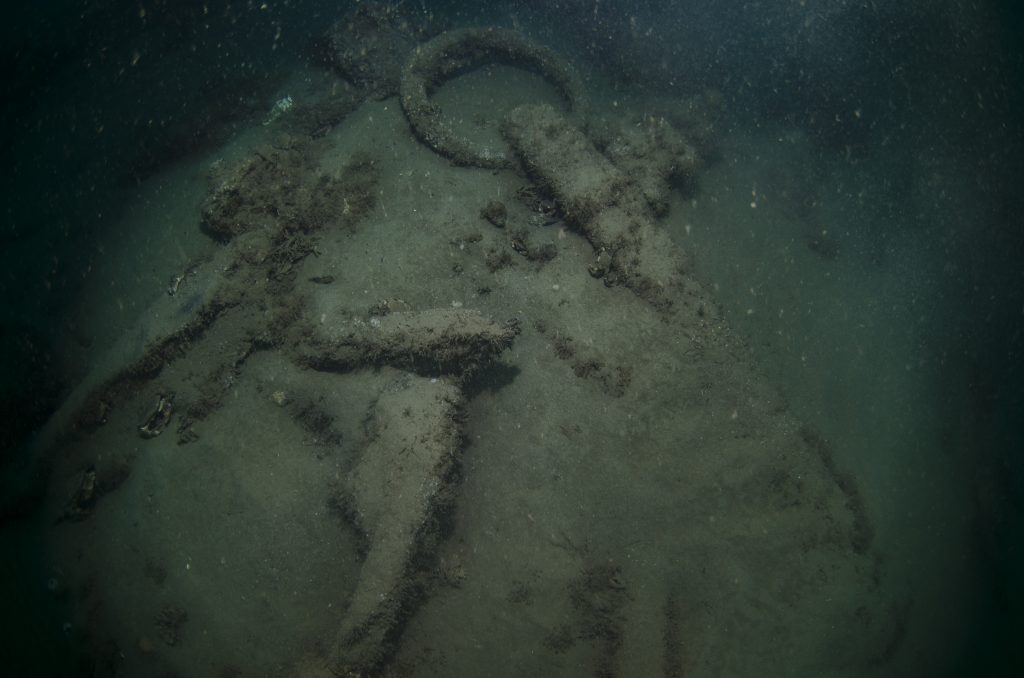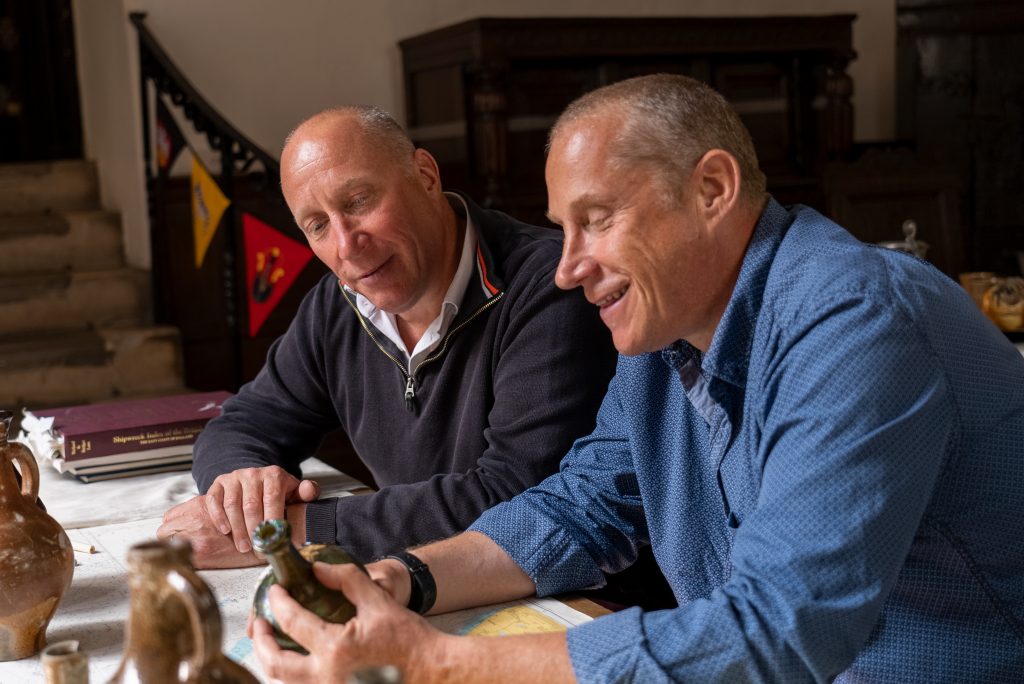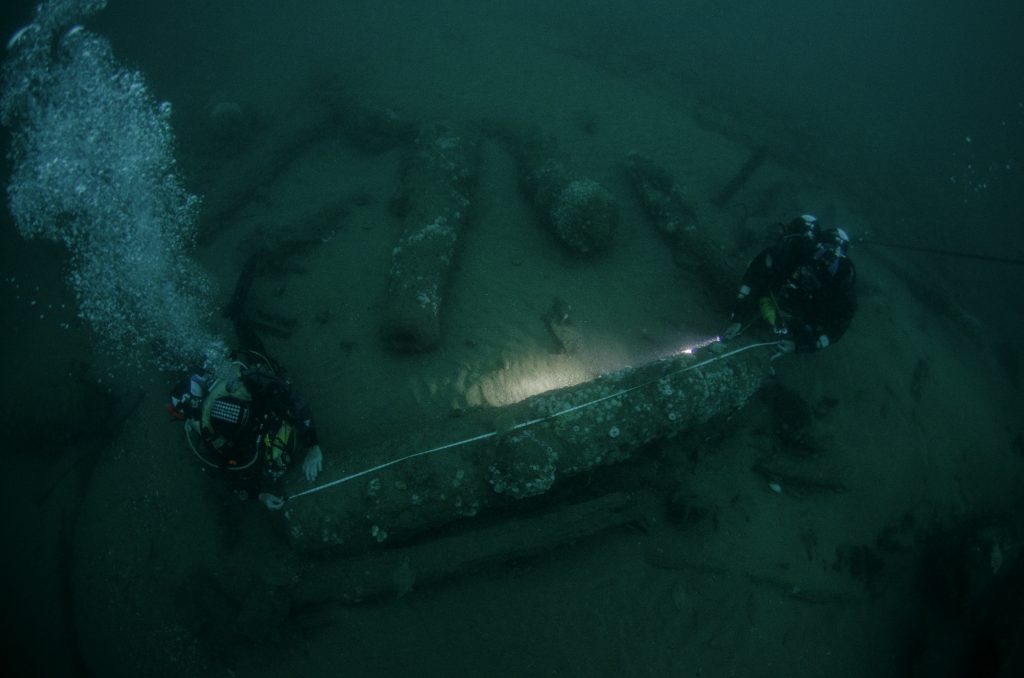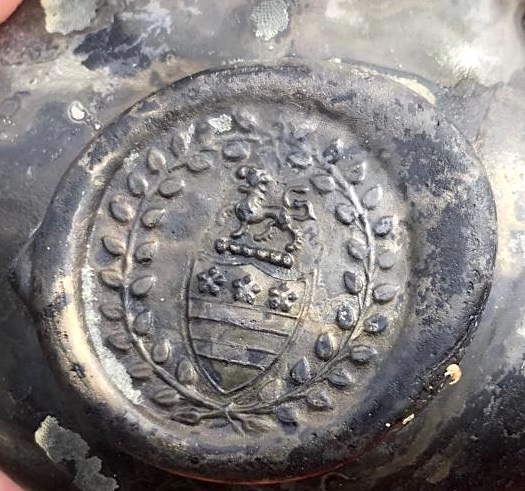Art World
Two Brothers Have Discovered the ‘Gloucester’ Shipwreck, Which Carried a Former King of England, After 340 Years
A descendent of George Washington was also on board.

A descendent of George Washington was also on board.

Amah-Rose Abrams

One of the most famous shipwrecks in British history has been discovered off the Norfolk coast. The Gloucester sank in the 17th century while attempting to unite James Stuart, the future King James II of England, with his pregnant wife. It also carried people of all stations of royalty, as well as servants and deckhands, making the ship a time capsule of life at that time.
Brothers Lincoln and Julian Barnwell, along with their late father, discovered the Gloucester wreck in 2007, but it was kept under wraps until now in order to protect it. Now, a team calling themselves “Gloucester Project” is seeking funding to explore and raise what has lain beneath the waves for the last 340 years.

Anchor ring. Photo © Norfolk Historic Shipwrecks.
“Because of the circumstances of its sinking, this can be claimed as the single most significant historic maritime discovery since the raising of the Mary Rose in 1982,” Claire Jowitt, a maritime historian, said in a statement. “The discovery promises to fundamentally change understanding of 17th-century social, maritime, and political history.”
The ship, built at Limehouse in 1652, set sail from Portsmouth two years later to carry James Stuart and his entourage to collect his wife from Edinburgh and bring her back to the court of his older brother and predecessor to the throne, King Charles II, where it was hoped she would provide him an heir for the royal line. The ship ran aground 28 miles offshore trying to navigate the Norfolk Sandbanks, and it has remained there ever since, its precise whereabouts unknown.

Brothers Julian and Lincoln Barnwell discovered the wreck with their friend James Little in 2007 after four-and-a-half-years of searching. It was a dream they had held since watching a documentary about the raising of the Mary Rose as children.
“It was our fourth dive season looking for Gloucester,” Lincoln Barnwell said. “We were starting to believe that we were not going to find her, we’d dived so much and just found sand. On my descent to the seabed the first thing I spotted were a large cannon laying on white sand, it was awe- inspiring and really beautiful. It instantly felt like a privilege to be there, it was so exciting. We were the only people in the world at that moment in time who knew where the wreck lay.”

The Barnwell Brothers measuring a cannon. Photo © Norfolk Historic Shipwrecks.
“When we decided to search for the Gloucester, we had no idea how significant she was in history,” added his brother Julian Barnwell. “We had read that the Duke of York was onboard but that was it. We were confident it was the Gloucester, but there are other wreck sites out there with cannons, so it still needed to be confirmed.”
After they discovered the wreck, the brothers completed a course with the Nautical Archaeology Society in underwater archaeology and, with the help of the University of East Anglia, began to identify the wreck.

A pair of glasses in original case. Photo © UEA
Items they found included wine bottles bearing a glass seal connected to a known passenger, Colonel George Legge, who was the nephew of George Washington. The bottle bears their stars and stripes crest.
As the ship lay in international waters it could only be made public once it had been confirmed as the Gloucester and been declared to the Receiver of Wreck, Ministry of Defense and Historic England. Now those who safeguarded it are with the University of East Anglia, looking for help to raise the rest of the ship.

“It is an outstanding example of underwater cultural heritage of national and international importance,” said Jowitt. “A tragedy of considerable proportions in terms of loss of life, both privileged and ordinary, the full story of the Gloucester‘s last voyage and the impact of its aftermath needs re-telling, including its cultural and political importance, and legacy. We will also try to establish who else died and tell their stories, as the identities of a fraction of the victims are currently known.”